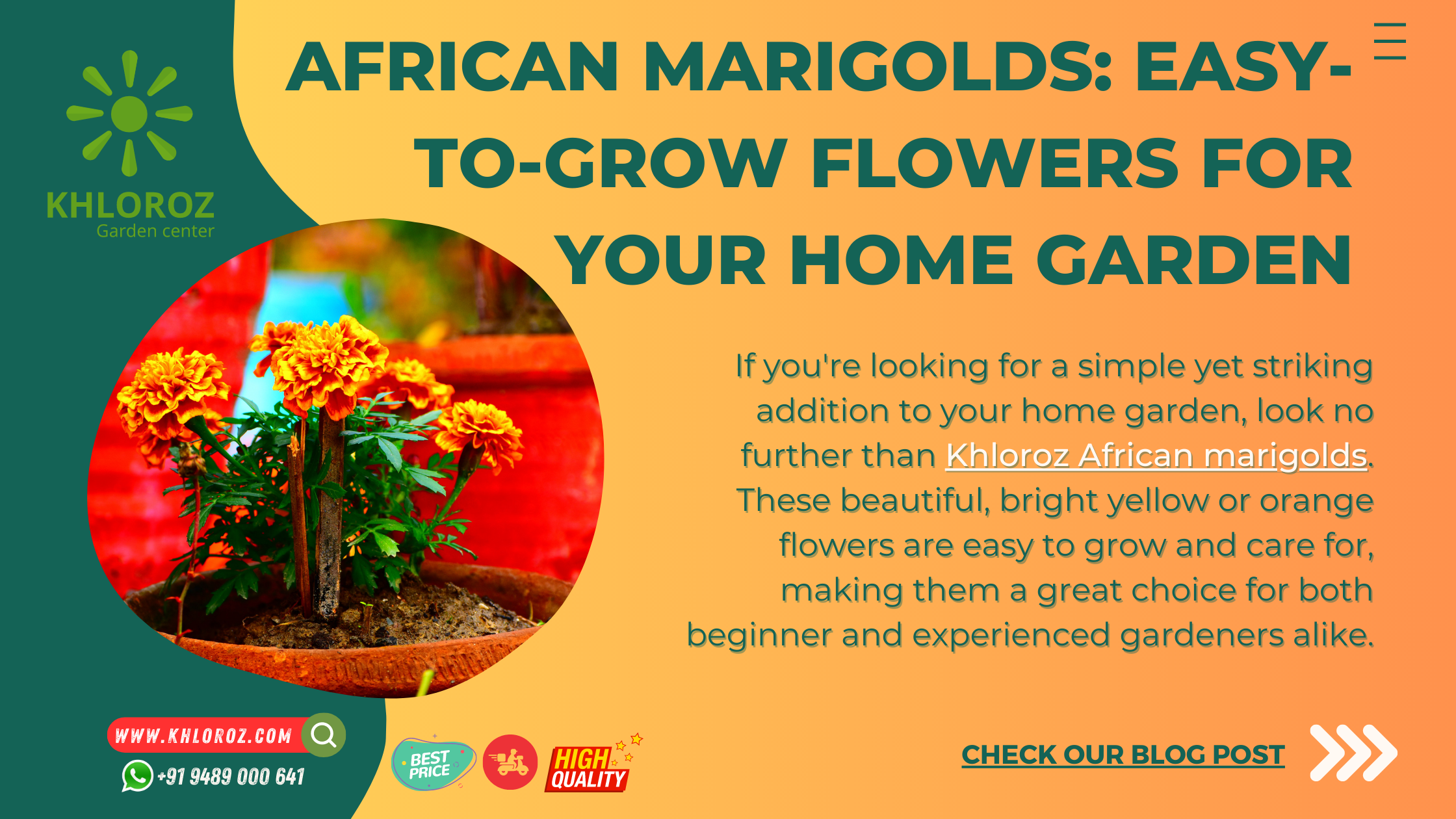Tag: Gardening Tips Garden Inspiration
Expert Tips for Maintaining Healthy Brinjal Plants in Terrace Gardens
Brinjal, also known as eggplant or aubergine, is a popular vegetable that can be easily grown in terrace gardens. With a little care and attention, you can grow healthy brinjal plants and enjoy fresh, flavorful brinjals throughout the growing season. In this blog post, we will share some expert tips for maintaining healthy brinjal plants in your terrace garden.
- Choose the Right Variety of Brinjal The first step to growing healthy brinjal plants is to choose the right variety. Some brinjal varieties are better suited for growing in terrace gardens than others. Look for varieties that are compact and bushy, rather than tall and sprawling. Some good options for terrace gardens include Dwarf, Pusa Purple Long etc. Khloroz Garden Center’s Brinjal Seeds are best for beginners as the Germination are very good. Khloroz Garden Center’s Brinjal Seeds are tested for its germination and Quality. Khloroz Have also collection of Heirloom seeds under Brinjal.
- Provide Adequate Sunlight Brinjal plants require plenty of sunlight to grow and produce fruit. Choose a sunny spot in your terrace garden that receives at least 6 hours of direct sunlight per day. If your terrace garden is partially shaded, consider using reflective surfaces to redirect sunlight towards your brinjal plants.
- Use Nutrient-Rich Soil Brinjal plants require well-draining soil that is rich in nutrients. Use a high-quality potting mix that contains organic matter, such as compost or vermicompost. You can make your own potting mix by combining equal parts of garden soil, compost, and sand. Alternatively you can use Khloroz Garden center’s Potting mix for starting. It is blend of Cocopeat (Low-EC), Red earth, Decomposed Manure added with Biofertilizers and Vermicompost.
- Water Regularly and Consistently Brinjal plants require regular and consistent watering to stay healthy and produce fruit. Water your plants deeply once or twice a week, depending on the weather and soil conditions. Avoid overwatering or underwatering, as this can lead to root rot or nutrient deficiencies.
- Fertilize Regularly Brinjal plants require regular fertilization to stay healthy and produce fruit. Use a balanced fertilizer that contains equal parts of nitrogen, phosphorus, and potassium. You can also use organic fertilizers, such as bone meal or fish emulsion, to provide nutrients to your plants. You can also use Khloroz’s Plant nutrient Collections as well.
- Prune and Pinch Back To promote healthy growth and prevent overcrowding, prune and pinch back your brinjal plants regularly. Remove any yellow or wilted leaves, as well as any suckers or shoots that emerge from the base of the plant. This will help to improve air circulation and prevent the spread of diseases.
In conclusion, growing healthy brinjal plants in terrace gardens requires some attention and care. By following these expert tips, you can ensure that your brinjal plants thrive and produce a bountiful harvest. With a little effort, you can enjoy fresh, flavorful brinjals throughout the growing season and add a delicious and nutritious vegetable to your meals.
African Marigolds: Easy-to-Grow Flowers for Your Home Garden
The marigold, among mortals called the herb of the sun, is rightly so named, since it retains its golden color even when it is dried
– Pliny the Elder
If you’re looking for a simple yet striking addition to your home garden, look no further than Khloroz African marigolds. These beautiful, bright yellow or orange flowers are easy to grow and care for, making them a great choice for both beginner and experienced gardeners alike.
Grow Marigold in your garden
Easy Growing flower series
African marigolds, also known as Tagetes erecta, are native to Mexico and Central America but have been cultivated all over the world for their stunning flowers. They are a popular choice for home gardeners due to their hardiness, pest resistance, and the fact that they are relatively low maintenance. Khloroz African Marigold seeds are best for Beginners as the germination is good.
Here’s what you need to know to successfully grow African marigolds in your home garden:
Soil and Sunlight African marigolds grow best in well-drained soil with plenty of organic matter, so it’s a good idea to amend your soil with compost or other organic material before planting. They also prefer full sunlight, so make sure to choose a location that gets at least six hours of direct sunlight each day.
Planting: Khloroz African marigolds can be grown from seed or transplanted as young seedlings. If you’re starting from seed, sow them directly into the soil after the last frost in your area. If you’re transplanting seedlings, wait until they have at least two sets of true leaves before transplanting them into the ground.
Watering: While African marigolds can tolerate dry conditions, they do best with consistent watering. Water deeply once or twice a week, rather than shallowly every day, to encourage deep root growth.
Fertilizing: African marigolds are not heavy feeders and do not require much fertilizer. A light application of a balanced fertilizer every six to eight weeks should be sufficient.
Deadheading: To encourage continuous blooming, it’s a good idea to deadhead your African marigolds. This means removing spent flowers before they have a chance to go to seed. Simply pinch off the flower head and discard it.
Pest Control: African marigolds are relatively pest-resistant, but they can occasionally be affected by aphids, spider mites, and other common garden pests. If you notice any signs of infestation, treat your plants with a natural pesticide or insecticidal soap.
With just a little bit of care and attention, you can enjoy the vibrant beauty of African marigolds in your home garden all season long. Their cheerful blooms are sure to brighten up your space and bring a smile to your face every time you see them. So why not give them a try this year?



